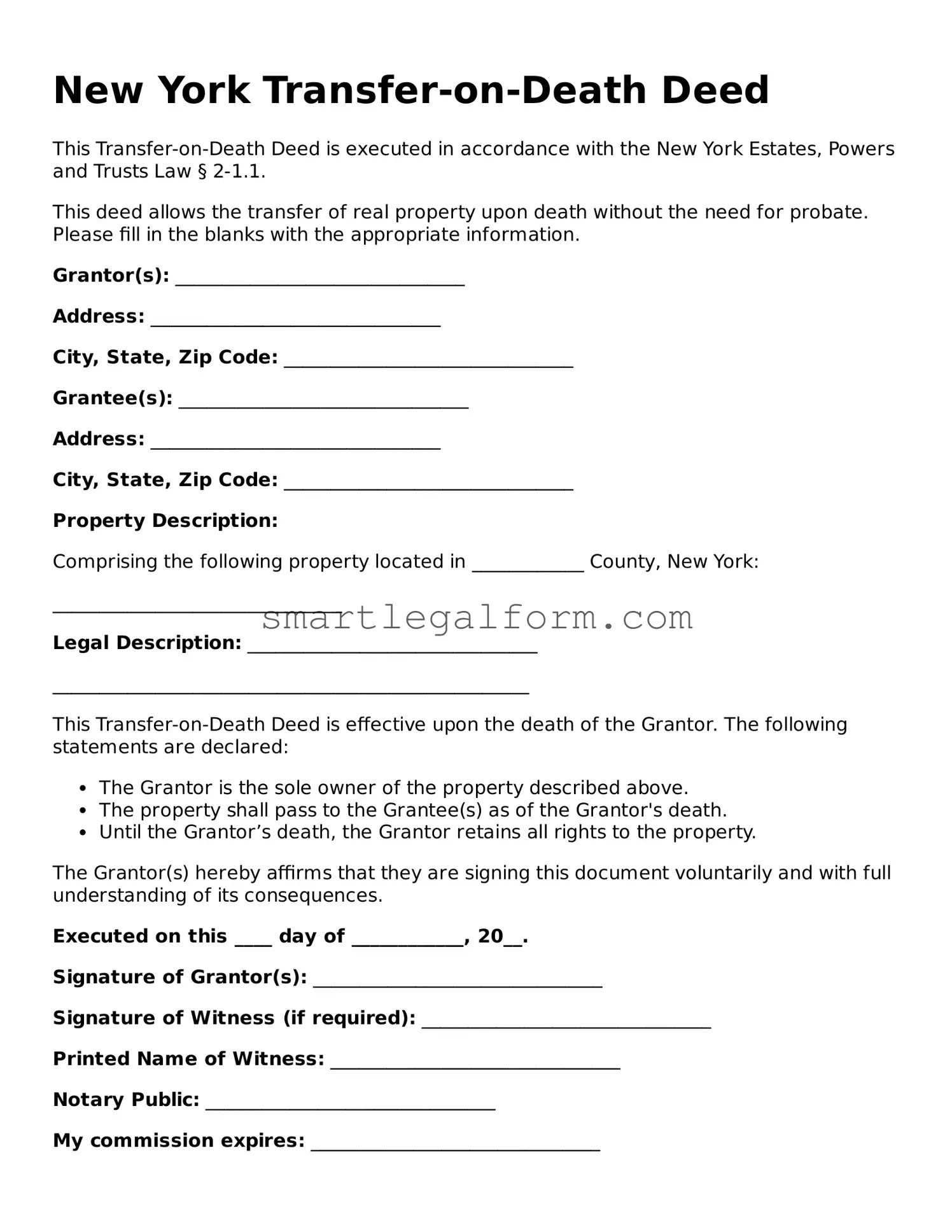New York Transfer-on-Death Deed
This Transfer-on-Death Deed is executed in accordance with the New York Estates, Powers and Trusts Law § 2-1.1.
This deed allows the transfer of real property upon death without the need for probate. Please fill in the blanks with the appropriate information.
Grantor(s): _______________________________
Address: _______________________________
City, State, Zip Code: _______________________________
Grantee(s): _______________________________
Address: _______________________________
City, State, Zip Code: _______________________________
Property Description:
Comprising the following property located in ____________ County, New York:
_______________________________
Legal Description: _______________________________
___________________________________________________
This Transfer-on-Death Deed is effective upon the death of the Grantor. The following statements are declared:
- The Grantor is the sole owner of the property described above.
- The property shall pass to the Grantee(s) as of the Grantor's death.
- Until the Grantor’s death, the Grantor retains all rights to the property.
The Grantor(s) hereby affirms that they are signing this document voluntarily and with full understanding of its consequences.
Executed on this ____ day of ____________, 20__.
Signature of Grantor(s): _______________________________
Signature of Witness (if required): _______________________________
Printed Name of Witness: _______________________________
Notary Public: _______________________________
My commission expires: _______________________________
